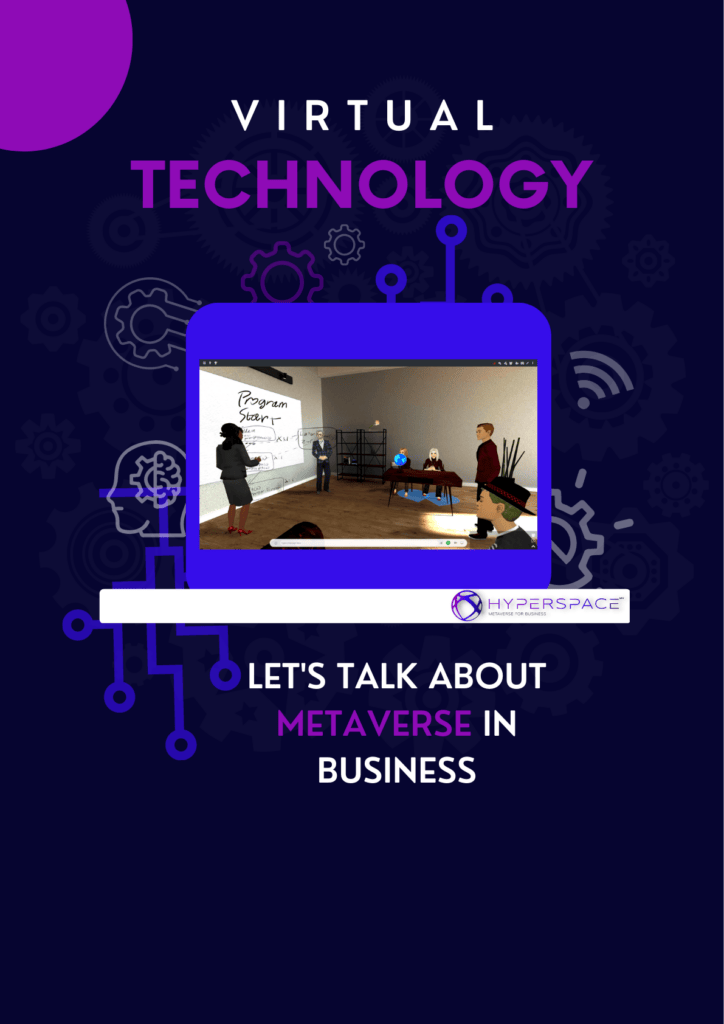erse is quickly becoming a reality, and businesses must be prepared. A Metaverse PESTLE Analysis can help organizations understand the various factors in this new digital landscape so they can make informed decisions about their strategies. This type of analysis considers Political, Economic, Social, Technological, Legal and Environmental (PESTLE) factors that could affect business operations within the Metaverse. By conducting a thorough Metaverse PESTLE Analysis for your organization, you will gain insights into potential risks and opportunities associated with venturing into virtual worlds. This post will examine the steps to carry out a Metaverse PESTLE Analysis and how best to approach it.
Table of Contents:
- What is a Metaverse PESTLE Analysis?
- How to Conduct a Metaverse PESTLE Analysis
- Applications of a Metaverse PESTLE Analysis for Businesses
- Challenges in Conducting a Metaverse PESTLE Analysis
- Data Availability and Quality:
- The complexity of Interpreting Results:
- 5 . Best Practices for Conducting a Metaverse PESTLE Analysis
- FAQs about Metaverse Pestle Analysis
- Conclusion
What is a Metaverse PESTLE Analysis?
A Metaverse PESTLE Analysis is a comprehensive tool used to analyze the external environment of an organization and its impact on the business. It combines two commonly used analytical frameworks: the Metaverse, which focuses on virtual worlds and their potential applications, and PESTLE analysis, which looks at political, economic, social, technological, legal and environmental factors.
A metaverse is “a simulated universe or virtual world in which users can interact with each other” (Oxford Languages). A metaverse is an interactive digital realm where individuals can participate in gaming or shopping. A metaverse has immense potential for businesses because it allows them to create unique experiences that appeal to customers in new ways.
PESTLE stands for Political-Economic-Social-Technological-Legal-Environmental analysis; this framework enables organizations to identify key trends within these areas that may impact their operations. By assessing how each factor might affect their industry or sector, they can plan accordingly and make informed decisions about their strategy going forward.
Combining these two tools gives businesses a well-rounded view of the external environment to gauge the potential pitfalls of venturing into the metaverse market before investing resources. This helps them ensure that any investments yield returns by providing insight into consumer tastes and spotting upcoming opportunities or risks from competitors operating within this space. It also allows companies to gain an in-depth understanding of regulatory requirements related to data protection laws when setting up shop in a virtual world – something vital for compliance purposes but often neglected during planning stages due to a lack of knowledge about applicable legislation changes impacting this area specifically.
A Metaverse PESTLE Analysis provides decision-makers invaluable information regarding current conditions and future projections for directly applicable and adjacent markets. This gives them greater flexibility when formulating plans while helping reduce risk exposure significantly over time if utilized properly.
A Metaverse PESTLE Analysis is an effective way to comprehensively understand the external factors that could potentially impact your business when entering the Metaverse. By assessing these six distinct areas, you can make more informed decisions and plan accordingly for any potential risks or opportunities ahead. To better understand the external factors that could influence your business in the Metaverse, let us examine how to perform a Metaverse PESTLE Analysis.
Key Takeaway: A Metaverse PESTLE Analysis is an effective tool for businesses to gain a comprcomprehensively understanding environment and its impact on their operations. By combining two frameworks – Metaverse (virtual worlds) and PESTLE analysis (political, economic, social, technological, legal and environmental factors) – organizations can identify potential opportunities or risks from competitors operating in this space as well as plan accordingly based on any applicable regulatory requirements related to data protection laws.
How to Conduct a Metaverse PESTLE Analysis
Conducting a Metaverse PESTLE Analysis can effectively assess your business’s current and future potential in the Metaverse. First, you must identify the political factors affecting your organization’s operations. This includes researching government policies, regulations, taxes, and other laws that may impact your business activities. Moreover, thinking about any international trade pacts or global occurrences that could potentially influence your organization’s capacity to function in certain areas is essential.
Next, assessing economic factors should also be part of this analysis. This means analyzing macroeconomic trends such as inflation and GDP growth rates and microeconomic indicators like consumer spending patterns and industry-specific data points. To make informed decisions, it is necessary to consider how macro- and microeconomic trends will affect demand for the company’s offerings.
Examining the tech elements that could affect a business’s success in the Metaverse necessitates considering how rapidly new technologies are being taken up and their effect on customer conduct. Companies should look at trends such as data storage capacity, bandwidth availability, software development capabilities, and hardware specifications when evaluating their potential for success within this space. Companies should also evaluate the current state of artificial intelligence (AI) applications and virtual reality (VR) tools to ensure they are well-positioned to capitalize on these opportunities.
Evaluating legal factors involves understanding applicable laws related to intellectual property rights or privacy regulations that could affect your operations in the Metaverse. Businesses must be aware of any regulations that may restrict their operations within certain jurisdictions or require them to meet particular standards when providing services and products in specific countries. Finally, understanding environmental factors can help organizations plan by anticipating changes in consumer behaviours due to climate change or other natural disasters. Companies should evaluate potential risks posed by natural disasters and impacts like water shortages or air pollution that could drive consumers away from certain goods and services.
Examining technological factors requires a comprehensive analysis of the available tools and technologies for creating immersive experiences within the metaverse environment. Assessing the tech needed to make a virtual world engaging involves studying various pieces of equipment (e.g., headsets), software programs (such as game engines), development frameworks (for instance, Unity), content networks, and analytics toolkits. It is important to stay abreast of new developments to capitalize on them before competitors do while being aware of any potential limitations associated with each option before committing resources towards implementation plans.
Evaluating legal considerations necessitates thorough research into pertinent copyright laws that govern intellectual property rights over virtual assets produced within a specific platform. It is also imperative to review privacy policies regarding data collection/storage practices employed by organizations operating in the Metaverse and applicable terms and conditions for all users accessing the said platform. Furthermore, any liability issues associated with user-generated content shared therein must be considered carefully before proceeding with activities within this space; failure to comply could lead to hefty fines or even cessation of operations due to non-compliance.
Finally, environmental concerns are equally crucial factors to consider during the analysis process since global warming has become an increasingly pressing issue today. Businesses should become familiar with the sustainable development objectives endorsed by different nations and entities to guarantee that their activities do not lead to additional damage to the environment and its people. Such research helps firms devise appropriate strategies to reduce their carbon footprint and minimize waste production, ensuring greater sustainability in the long run, which is financially and environmentally beneficial.
Conducting a metaverse PESTLE analysis can help businesses identify and assess the political, economic, social, technological, legal and environmental factors that may affect their operations. This can be employed to direct strategic decision-making and market research activities. This section will discuss applications of a metaverse PESTLE analysis for businesses.
Key Takeaway: Conducting a PESTLE analysis of the Metaverse is essential for businesses looking to capitalize on its potential. This involves assessing political, economic, technological, legal and environmental factors affecting operations within this space. Companies must be aware of applicable regulations and any international trade agreements to make informed decisions about their activities; they should also research trends related to AI applications and VR tools while considering sustainability goals to stay ahead of the competition.
Applications of a Metaverse PESTLE Analysis for Businesses
Considering various external elements, this analysis provides an insightful overview of the current situation and likely future developments. Strategic planning and decision-making are two key applications that can benefit from this type of analysis.
For strategic planning, a Metaverse PESTLE Analysis can help identify new opportunities and threats that may be present in the metaverse landscape. A Metaverse PESTLE Analysis allows businesses to evaluate their competitive standing compared to other players in the same domain. This information can then be used to develop effective strategies for gaining market share or expanding into new markets.
Market research and forecasting are other areas where a Metaverse PESTLE Analysis is particularly useful. By studying each component separately, companies can understand consumer inclinations, sector developments, regulatory alterations, tech advancements, etc., to make educated decisions regarding future product introductions or advertising initiatives. Moreover, this analysis can be utilized to anticipate how competitors may respond in various situations and the potential implications for future business activities.

A metaverse PESTLE analysis gives businesses the necessary insights to make strategic decisions, conduct market research and forecasting, and manage risks. However, several challenges are associated with conducting a metaverse PESTLE analysis, such as data availability and quality, the complexity of interpreting results, and time constraints.
Key Takeaway: A Metaverse PESTLE Analysis is an essential tool for businesses looking to capitalize on the opportunities of the Metaverse, providing a 360-degree view of current and potential trends. It’s invaluable for strategic planning, market research and forecasting, allowing companies to stay ahead of the curve by understanding consumer preferences, industry developments and competitor behaviour.
Challenges in Conducting a Metaverse PESTLE Analysis
Conducting a metaverse PESTLE analysis can be challenging due to data availability and quality, the complexity of interpreting results, and time constraints.
Data Availability and Quality:
Obtaining reliable data for a metaverse PESTLE analysis is difficult since the technology is still in its early stages. The scarcity of dependable sources makes it difficult to pinpoint major movements in the Metaverse’s political, economic, social, technological, legal, and ecological aspects. Additionally, obtaining quality data from third-party sources can be expensive, further complicating matters.
The complexity of Interpreting Results:
Once all the relevant data has been gathered for a metaverse PESTLE analysis, it must then be interpreted correctly so that meaningful conclusions can be drawn from it. Comprehending the consequences of each factor and their interaction with one another is an intricate task, further complicating the process. It’s easy to draw incorrect assumptions if you don’t have enough experience analyzing this type of information or if you make mistakes while interpreting your findings.
Lastly, conducting a thorough metaverse PESTLE analysis takes time because many factors need to be considered when assessing each aspect, such as current trends in politics or economics and future predictions about these areas. As such, it can take weeks or even months before any meaningful insights are gained from this exercise, making it difficult for businesses that need quick decisions on their strategies moving forward to stay competitive in today’s rapidly changing world.
Conducting a metaverse PESTLE analysis can be challenging due to data availability and quality, the complexity of interpreting results, and time constraints. Still, with the proper technique and optimal methods, getting valuable knowledge from a metaverse PESTLE analysis is feasible.
Key Takeaway: Conducting a metaverse PESTLE analysis is no walk in the park due to the lack of reliable data sources and complex interpretations needed. It’s a lengthy process, so businesses should anticipate extensive research before deciding based on the results. Despite the difficulty, taking on a metaverse PESTLE analysis can be rewarding.
5 . Best Practices for Conducting a Metaverse PESTLE Analysis
When conducting a Metaverse PESTLE Analysis, it is important to establish clear objectives and set measurable goals. Organizing the procedure and ensuring it is carried out orderly are essential for conducting a successful Metaverse PESTLE Analysis. Additionally, having clear objectives allows for a more accurate interpretation of results. Gathering relevant data is another key step in the process; this includes researching external factors such as political, economic, social, and technological (PEST) as well as legal and environmental (L&E) and having access to reliable information sources entity potential opportunities or risks associated with entering the metaverse space.
Utilizing expertise from various organizational departments can also be beneficial when conducting a Metaverse PESTLE Analysis. For example, marketing teams may have valuable insights into consumer trends that could influence product development decisions or pricing strategies in the metaverse market. Similarly, finance teams may be able to provide useful information on financial risk management practices; at the same time, IT; atonal may know about technological advancements that could impact operations within virtual worlds.
Keeping track of any alterations in the external environment is paramount, as these can affect short- and long-term business strategies for virtual operations. Staying aware of the current industry trends and happenings can give businesses an edge by enabling them to swiftly alter their plans in response, a way of keeping close tabs on the market.
“Conducting a Metaverse PESTLE Analysis? Establish clear objectives, gather relevant data & utilize expertise from various departments. Monitor changes in the external environment for long-term success.” #MetaversePESTLEAnalysis #VirtualWorlds #BusinessStrategyClick to Tweet
FAQs about Metaverse Pestle Analysis
What is Facebook’s PESTEL analysis?
PESTEL stands for Political, Economic, Social, Technological, Environmental and Legal factors. Facebook’s PESTEL analysis examines the external environment in which it operates. Politically, there are regulations on data privacy and content that must be adhered to; economically, there are costs associated with running a large-scale platform, such as bandwidth and infrastructure; socially, the company needs to remain aware of consumer sentiment regarding its product offerings; technologically, they need to stay ahead of competitors by offering innovative features while keeping their platforms secure from malicious actors; environmentally they have pledged commitment towards sustainability initiatives like renewable energy sources for powering their servers and reducing carbon emissions. Lastly, they must legally comply with all applicable laws concerning intellectual property rights.
What are the functions of Metaverse?
The Metaverse is an interactive, real-time virtual reality where users can explore and engage. Businesses can construct their 3D virtual universes, customizing them with features like avatars, objects, physical simulations and AI. With the help of APIs and SDKs, it can be used for immersive learning experiences or marketing campaigns. Additionally, users can access various tools like voice chat systems and analytics, which allow them to measure engagement levels within their environment. All these functions make the Metaverse a powerful tool for business innovation by providing companies with a platform for creating unique digital experiences.
What is PESTLE analysis for the technology industry?
PESTLE analysis is a strategic tool to evaluate the macro-environmental factors that may impact an organization’s performance. It stands for Political, Economic, Social, Technological, Legal and Environmental. In the technology industry, PESTLE analysis can identify potential opportunities or threats associated with technological advancements to make informed decisions about how best to capitalize on them or mitigate any risks they present. This includes understanding the political landscape of where your business operates; analyzing economic trends such as inflation rates; assessing social dynamics like customer preferences and behaviours; researching legal implications such as copyright laws; examining environmental concerns related to production processes and emissions standards; and lastly evaluating technological advances like artificial intelligence (AI) or blockchain technologies.
What are examples of technology factors in PESTLE analysis?
Technology factors in PESTLE analysis include the availability of technology, its cost, and the speed at which it is advancing. In PESTLE analysis, hIn PESTLE analysis, hardware (e.g., PCs, servers), and software (e.g., OSs, apps) are technology factors. Additionally, technological advances may affect consumer behaviour by making certain products or services more accessible or attractive to them. Finally, technological changes can also open up new markets for businesses to enter and provide opportunities for increased efficiency and productivity within organizations.
Conclusion
A metaverse PESTLE analysis is an important tool for businesses looking to prepare for the future of virtual worlds. It can provide insight into potential opportunities and threats, allowing organizations to make informed decisions regarding innovation in this space. By following best practices such as conducting thorough research and gathering data from multiple sources, businesses can ensure that their metaverse PESTLE analysis provides them with accurate information about the current state of the market. With a clear understanding of how their business fits within this new landscape, companies will be better equipped to capitalize on its advantages while mitigating any risks associated with entering the Metaverse.
Discover how Hyperspace can help you futureproof your Metaverse by providing a browser-based platform that allows universal access on all devices, including smartphones, tablets, laptops, and VR/AR headsets, without needing downloads or software installations.
Create a virtual world that meets your business needs with Hyperspace‘s intuitive drag-and-drop interface and customizable templates. Analyze the potential of metaverse opportunities using our pestle analysis to ensure success in immersive learning, training, and marketing campaigns.





